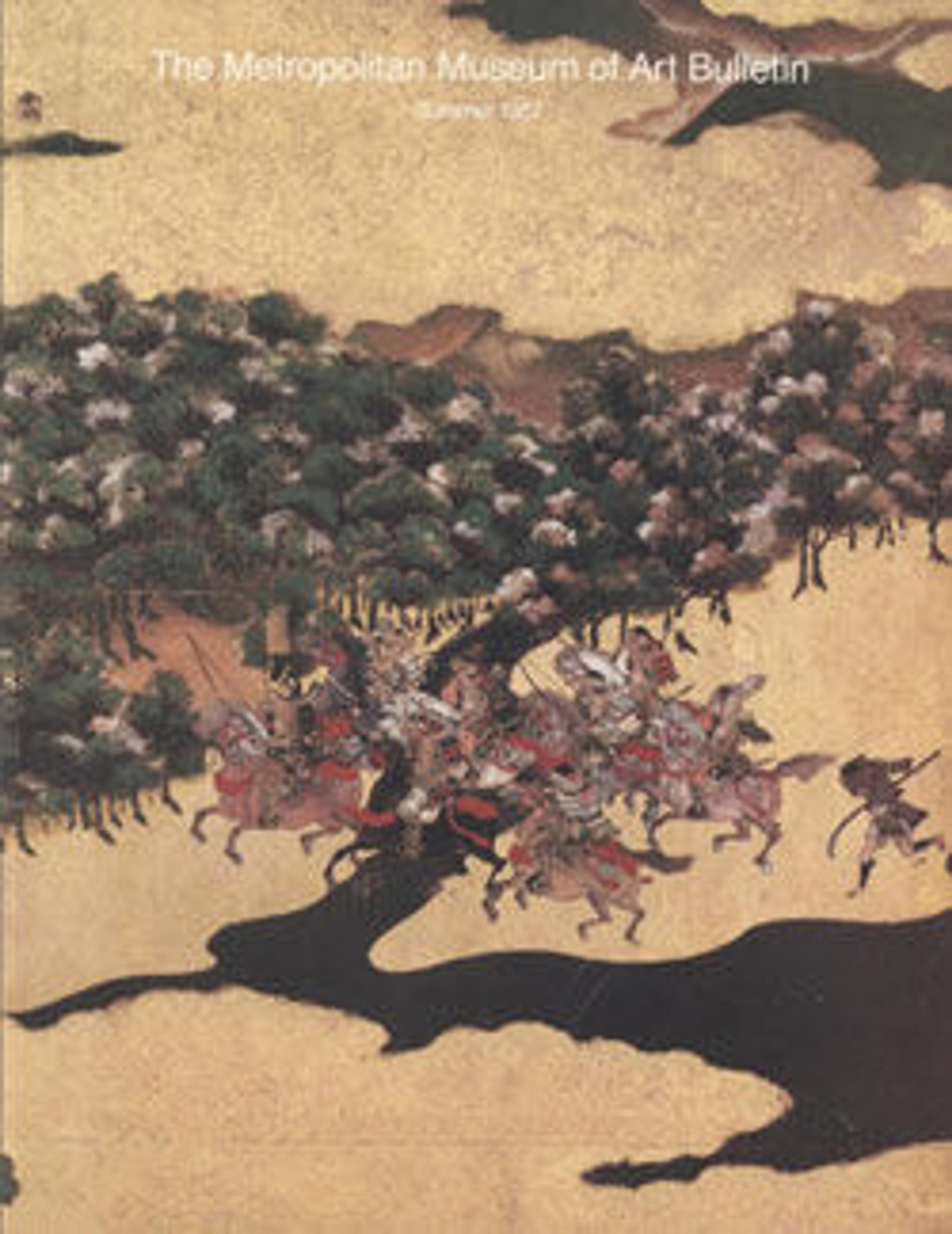Fujiwara no Kamatari as a Shinto Deity
The court minister Fujiwara no Kamatari (614–669), was the first of his illustrious clan to dominate Japanese court life (which the family continued to do through the twelfth century). After his death, he came to be venerated as a Shinto deity at Danzan Shrine in Tonomine, near Nara. Seen here in official garb, he is attended by his sons—one a high-ranking Buddhist monk and the other Kamatari’s successor at court. Their kami nature is indicated by three hanging golden mirrors—symbolic objects in Shinto.
Artwork Details
- 藤原鎌足像
- Title: Fujiwara no Kamatari as a Shinto Deity
- Period: Nanbokuchō period (1336–92)
- Date: after 1350
- Culture: Japan
- Medium: Hanging scroll; color on silk
- Dimensions: Image: 34 x 15 in. (86.4 x 38.1 cm)
Overall with mounting: 60 x 22 in. (152.4 x 55.9 cm)
Overall with knobs: 60 x 24 in. (152.4 x 61 cm) - Classification: Paintings
- Credit Line: Purchase, Bequests of Edward C. Moore and Bruce Webster, by exchange, and Gifts of Mrs. George A. Crocker and David Murray, by exchange, 1985
- Object Number: 1985.16
- Curatorial Department: Asian Art
More Artwork
Research Resources
The Met provides unparalleled resources for research and welcomes an international community of students and scholars. The Met's Open Access API is where creators and researchers can connect to the The Met collection. Open Access data and public domain images are available for unrestricted commercial and noncommercial use without permission or fee.
To request images under copyright and other restrictions, please use this Image Request form.
Feedback
We continue to research and examine historical and cultural context for objects in The Met collection. If you have comments or questions about this object record, please complete and submit this form. The Museum looks forward to receiving your comments.
